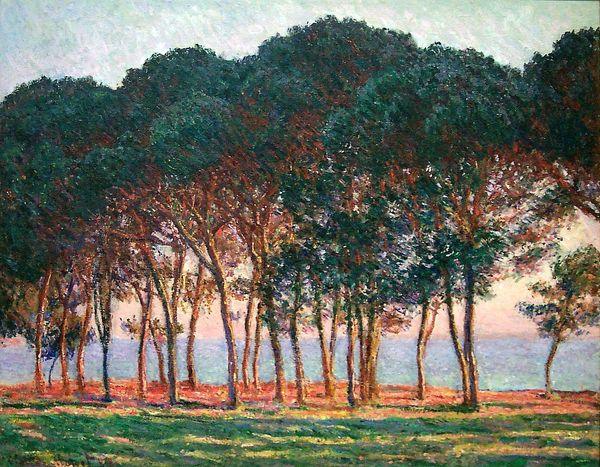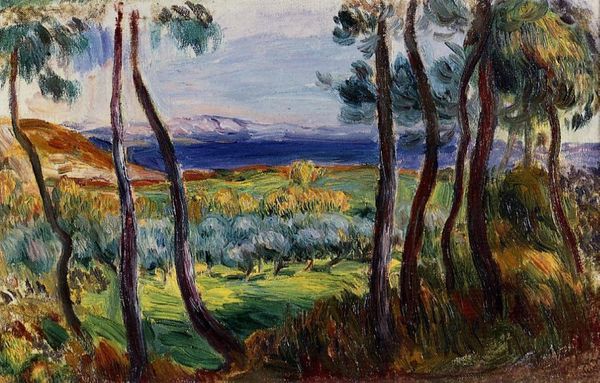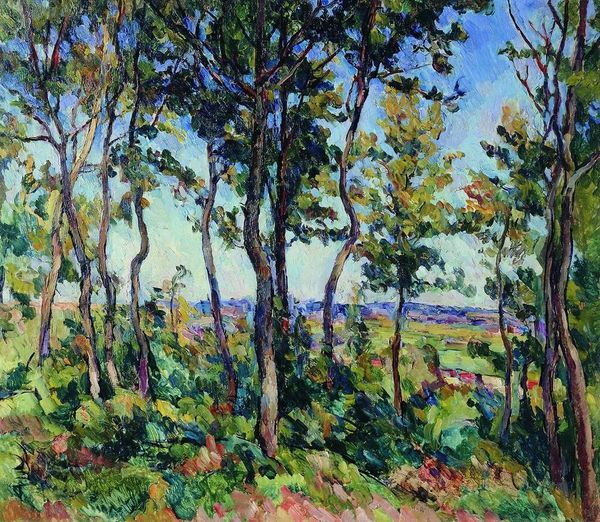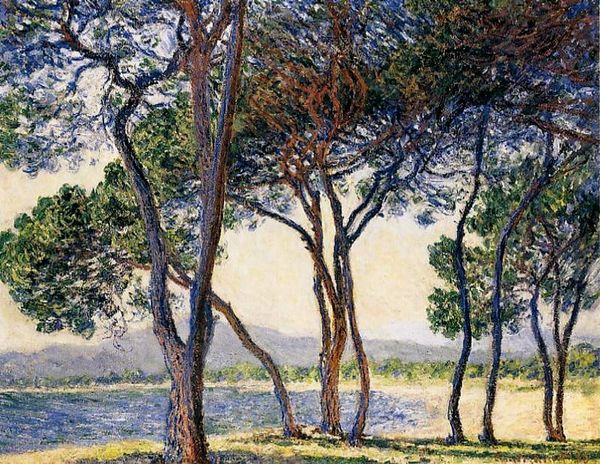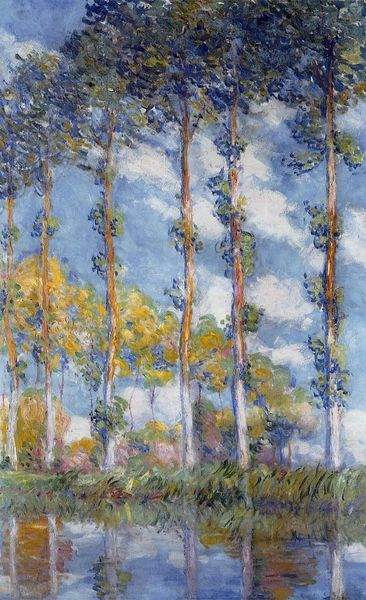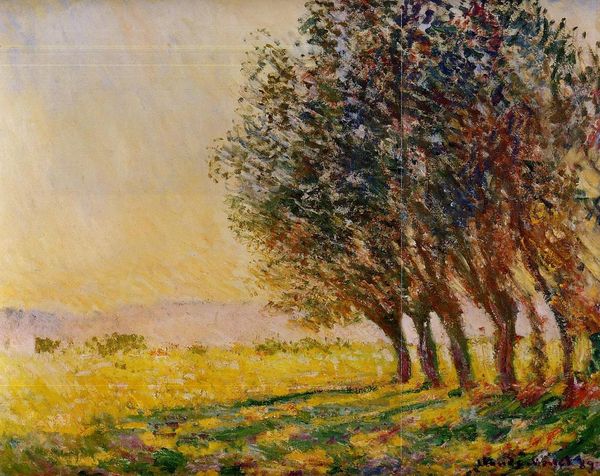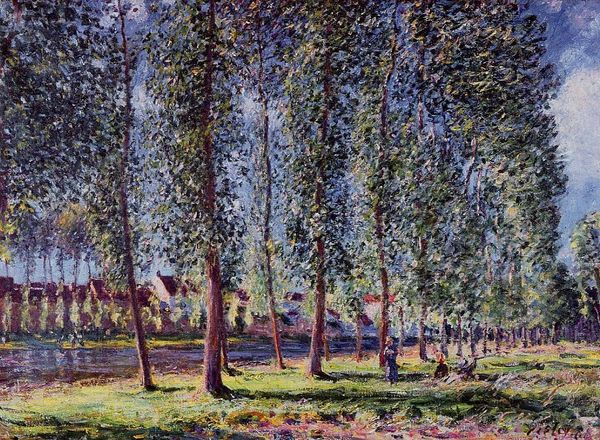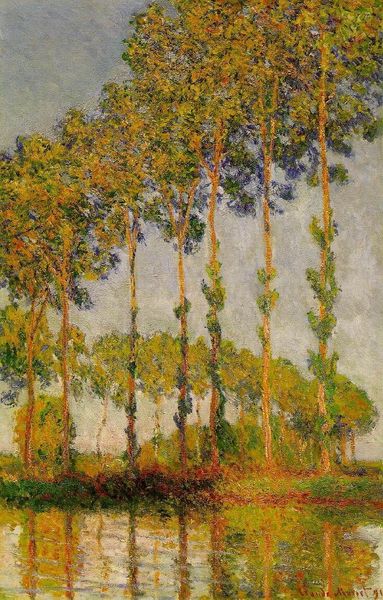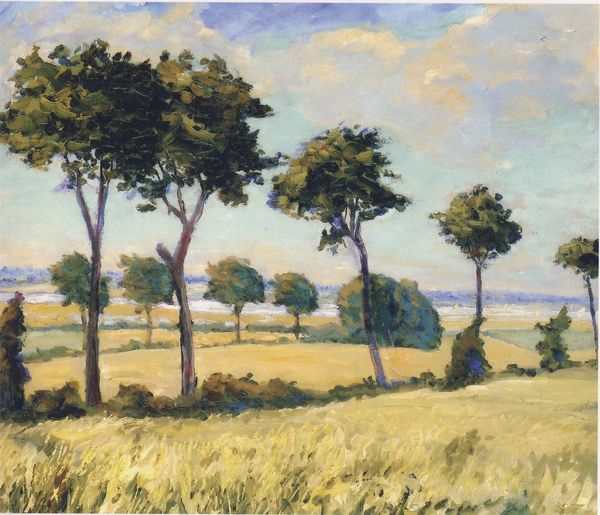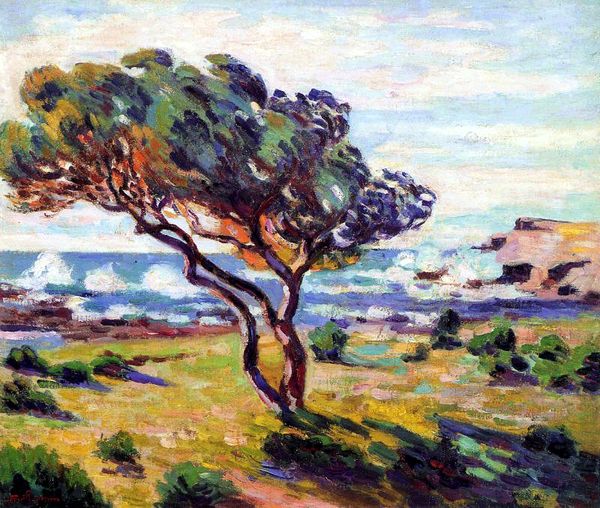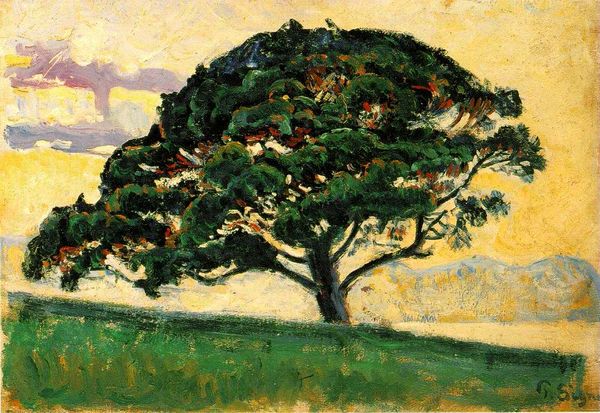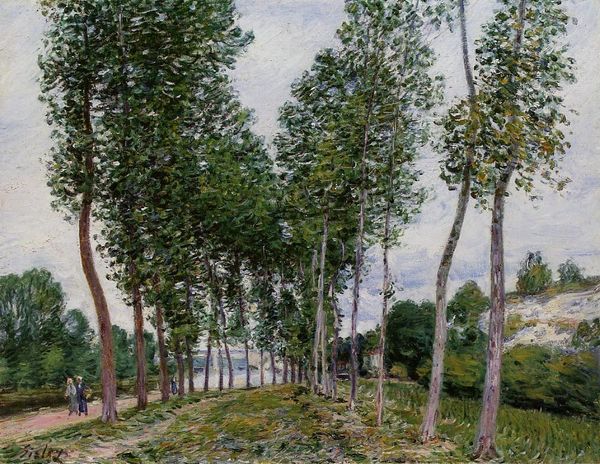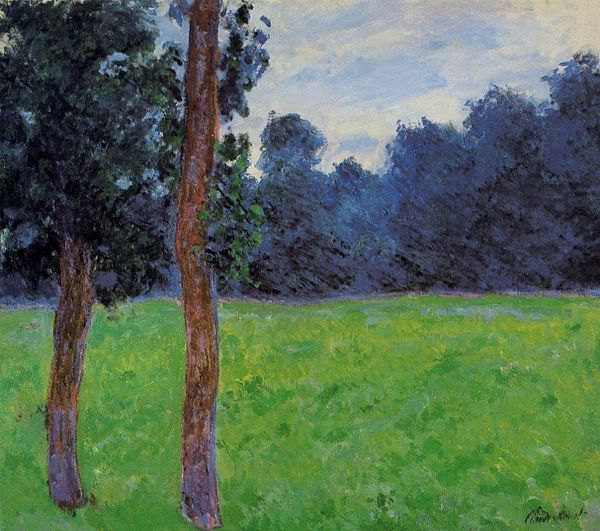
painting, plein-air, impasto
#
tree
#
sky
#
painting
#
impressionism
#
plein-air
#
landscape
#
landscape
#
impressionist landscape
#
nature
#
impasto
#
seascape
Copyright: Public domain
Curator: Here we have Claude Monet's "Pine Trees, Cap d'Antibes," painted in 1888. Editor: The choppy brushstrokes create a dazzling effect; it almost vibrates with restless energy. Curator: Absolutely. This piece exemplifies Monet’s interest in capturing fleeting moments and sensory experiences, very much rooted in the philosophical explorations of subjectivity prevalent at the time. Consider, too, the impact of Haussmannization on Parisian society. Artists grappled with portraying a rapidly modernizing world. Editor: Yes, but consider *how* he does it. The visible impasto of the paint—those thick dabs—aren't just about fleeting moments. It is about labor; applying the paint itself, reflecting a modern pre-occupation of art’s production methods, very visible to the end receiver of the art object. Curator: That’s insightful. But for me, what's particularly striking is how the gendered spaces of leisure and landscape interact. Cap d'Antibes, a resort destination, offered opportunities for wealthy women to engage with nature in ways that challenged Victorian norms. Editor: While those spaces absolutely offered women alternative interactions with the landscape, think also about the tools involved; mass produced paint and portable easels made en plein air paintings, like this one, possible. Curator: True, the availability of those materials certainly changed painting. And what of the societal factors regarding his chosen subjects? Consider that a number of Impressionists explored leisure as a theme – Degas and Renoir come to mind. However, this very topic implies a class position, especially the freedom to create such images! Editor: But class allowed the very purchase of these artworks. I'm also fascinated by Monet's strategic use of color; the juxtaposed blues and greens really do evoke the sun shimmering on the Mediterranean, but produced from industrially produced, easily available paints, shifting access and affordability for consumers of culture. Curator: It’s remarkable how he conveys the shimmering light. It's not simply about recording optical data. This captures a certain sense of hopefulness, characteristic of the belle epoque, just prior to the first world war. This new wealth provided opportunity and an optimistic outlook regarding human potential. Editor: Indeed, a tension of its potential – and that all starts from the artist and a canvas; and that's something to reflect on in viewing this beautiful, restless work. Curator: Thank you, it’s interesting how these painted trees speak about historical conditions but also individual perception. Editor: Yes, materiality and perception – a great pair for any discussion, don’t you agree?
Comments
No comments
Be the first to comment and join the conversation on the ultimate creative platform.
